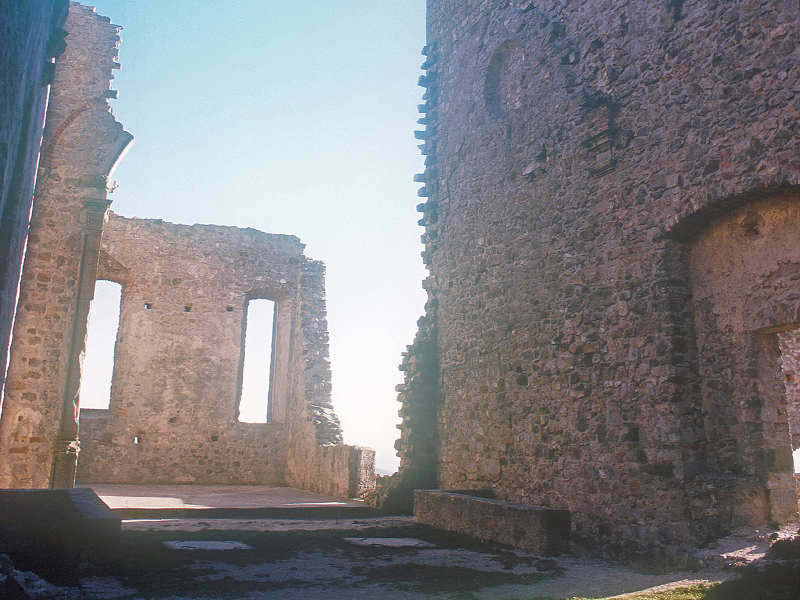Ruins of the Olivetani Monastery on Mt. Venda
A will of 1197 refers to a donation to “those of Venda”, thus recording the existence of a religious settlement by the top of the highest hill. The first monk to retire to this place was Adamo di Torreglia, who lived in a cave on the hilltop until 1160. In 1209 Stefano, former prior of St. Giustina, and friar Alberico built two small churches dedicated to St. Michael and to St. John the Baptist respectively, and in 1229 the small hermitage became a proper monastery under the rule of St. Benedict. Donations by the Maltraversi and Carraresi families made its importance increase, and a more imposing church dedicated to St. John the Baptist replaced the two former ones. In 1380 the monastery was entrusted to the Olivetani congregation, an aristocratic order skilled in wood painting and carving.
The single-nave, rectangular church had a mighty bell-tower, as well as an altar, a choir in carved wood, a chancel with lesenes in carved trachyte and, under the main altar, a crypt dedicated to St. Mary. The mighty and severe-looking monastery was composed of corridors, cells, storehouses, cloisters and vegetable gardens. After a long, peaceful period, the Republic of Venice suppressed the monastery in 1771, moved the monks and auctioned it; the Erizzo family bought it, but then the building became a shelter for shepherds and declined inexorably.

Ruins of the Olivetani Monastery
(photo by: PR Colli Euganei)





